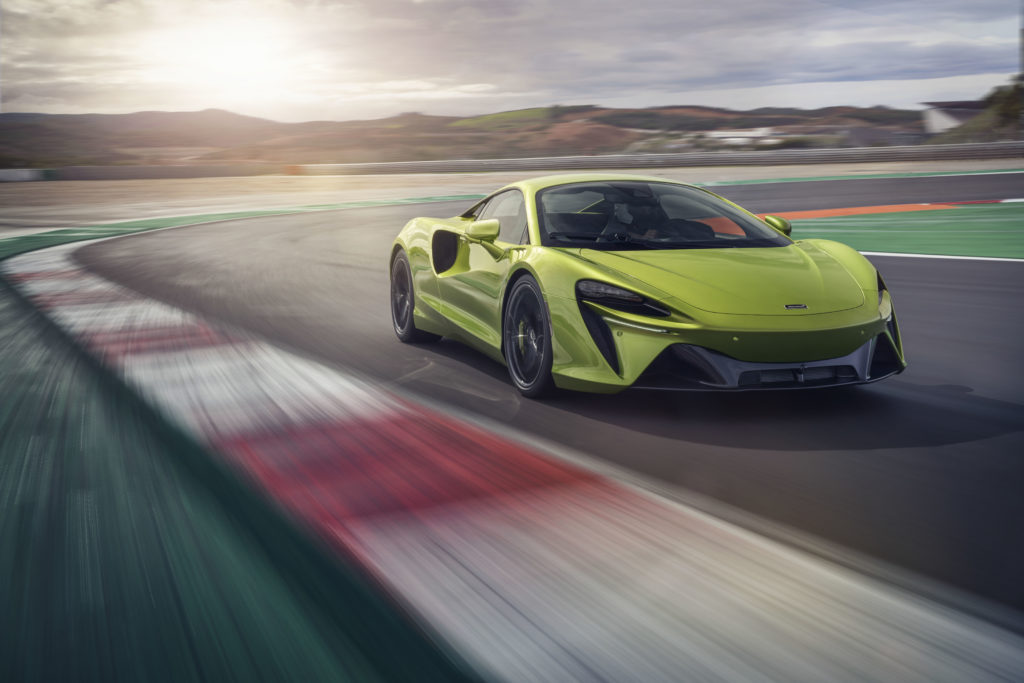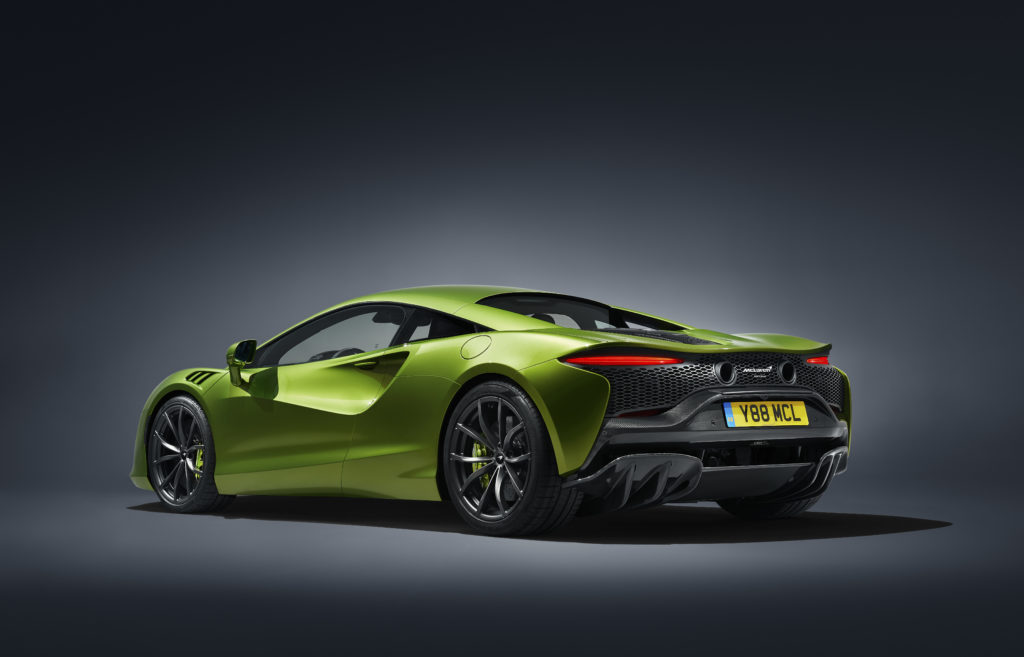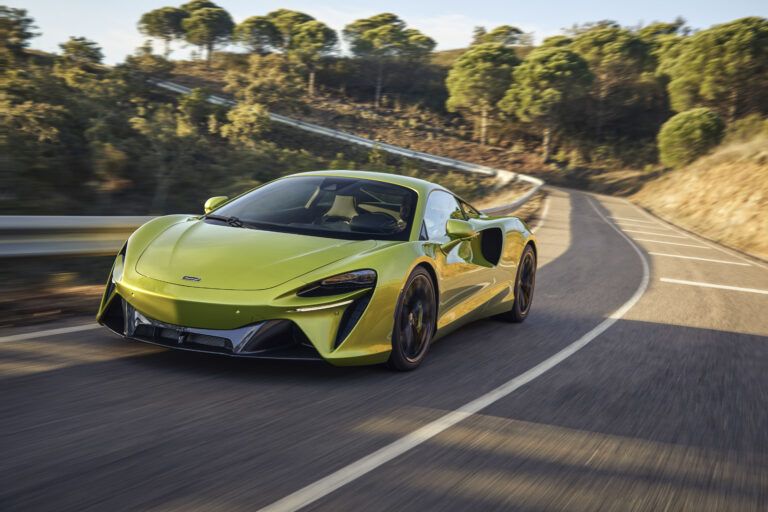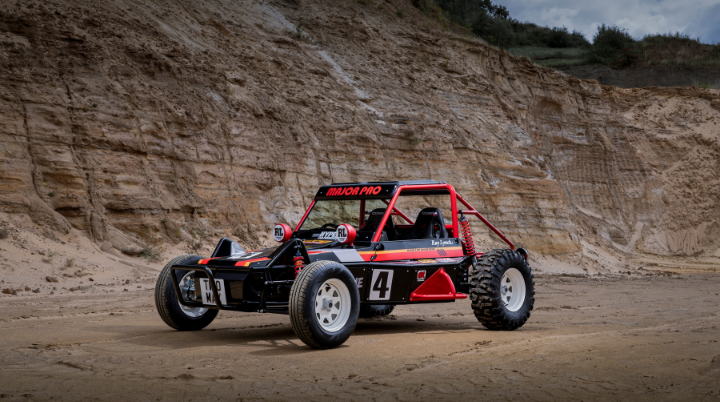British supercar manufacturer McLaren has revealed its next-generation model, the Artura, which is the brand’s first-ever series-production hybrid vehicle.
Pairing a 3.0-liter twin-turbo V6 engine with an axial flux electric motor and lithium-ion battery pack, the combined output of the High-Performance Hybrid powertrain is 680PS and 720Nm, with the torque of the E-motor ensuring instant throttle response. Straight-line acceleration of 0-100km/h (62mph) is achieved in 3.0 seconds and 0–300km/h (186mph) in just 21.5 seconds.
The £185,000 Artura will debut the new McLaren Carbon Lightweight Architecture (MCLA), where the compact HPH powertrain system to the weight of cabling used in the electrical systems where a 10% reduction was achieved. The total weight of hybrid components is just 130kg, which includes an 88kg battery pack and 15.4kg E-motor. Optimized for high-performance hybrid applications, it includes a bespoke battery compartment and introduces a ground-breaking domain-based ethernet electrical architecture, along with an electrical heating, ventilation and air-conditioning (eHVAC) system.
Artura’s compact axial flux E-motor, located within the transmission bell housing is said to be smaller and more power-dense than a conventional radial flux E-motor. It is capable of generating 95PS and 225Nm and boasts a power density per kilo 33% greater than the system used in the McLaren P1. The instantaneous nature of the motor’s torque delivery – known as ‘torque infill’ results in the sharpest throttle response of any McLaren. The axial flux E-motor is the first application in a series-production road car. The technology features a stator sandwiched between two rotor hubs and able to deliver exceptionally high power and torque density, while also being smaller and lighter.

The E-motor is powered by a battery pack comprising five lithium-ion modules, which sit on a cooling manifold, offering a usable energy capacity of 7.4kWh and a pure EV range of 30km. The battery is refrigerant cooled using cooling rails, and the assembly – including a power distribution unit which transfers battery power from the rear of the vehicle to the ancillaries in the front – is mounted on a structural carbon fiber floor. This assembly is then bolted onto the rear base of the monocoque.
The floor, which features aluminum inserts and a structural foam core, provides crash protection below the battery pack. Protection from the side and above comes from a bespoke cavity engineered into the monocoque, shared with the fuel tank which sits above the battery. The engine, transmission and rear frame shield from any rear impact, meaning the battery pack is protected.
From the battery pack, a high-voltage DC supply runs to the integrated power unit (IPU) at the front of the car. It is a combined DC/DC converter, on-board charger and front power distribution unit, and the sharing of power electronics in this unit reduces weight. The DC/DC converter changes the high-voltage DC current from the battery to low-voltage DC current that is used in the vehicle’s 12v system. The electronics also convert AC taken from the plug-in vehicle charger to the DC that charges the battery.

The Artura is designed with full Plug-in Hybrid (PHEV) capability and can be charged to an 80% charge level in just 2.5 hours with a standard EVSE cable. The batteries can also harvest power from the combustion engine during driving, tailored to the driving mode selected.
“From the very beginning of the project, designing and engineering the Artura has been all about challenging ourselves to innovate, pushing and pushing to achieve everything we knew a next-generation, High-Performance Hybrid McLaren supercar had to be. As a result, the Artura is all-new; the carbon fiber monocoque, electrical architecture and the body and interior are new. So too is the V6 engine, the transmission – which also integrates a new type of electric motor for the industry – as well as the rear suspension concept and our first-ever electronic differential,” said Geoff Grose, chief engineer of the McLaren Artura.





